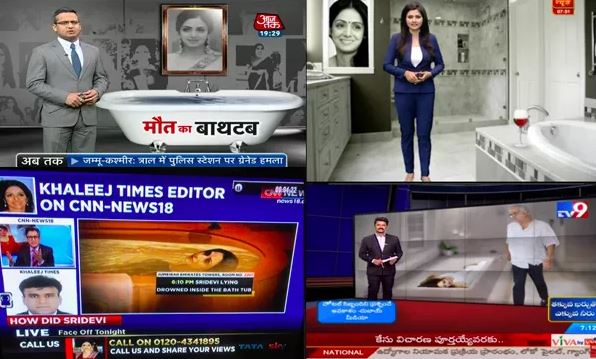Recently Donald Trump Junior visited India to promote luxury condominiums and described the Indian media as ‘mild and nice’. He made it seem like a compliment but for journalism and journalists, this can perhaps be seen as the worst compliment or an insult.
Journalism or media often called the fourth estate or the fourth pillar of democracy should be characterised by its rigour, courage, honesty, and the ability to ask tough questions. It should hold the powers accountable and act as the voice of the poor, the weak, and the defenceless. Indeed in the past, great journalism has often done this task admirably and has been responsible for righting many wrongs and bringing justice.
Recently the movie The Post was based on the journalists of The New York Times and The Washington Post and their decision to publish the Pentagon papers about United State’s controversial political and military involvement in Vietnam from 1945 to 1967 implicating many powerful people in the process. The media was also pivotal in exposing the Watergate scandal (which led to the discovery of multiple cases of abuse of power by the Nixon government). The investigative coverage by The Washington Post, Time, and The New York Times increased publicity and consequent political repercussions. Such was the impact of excellent media that applications to journalism school reached an all time high in 1974.
Media stories have impacted the course of history not just in terms of politics but also socially. Boston Globe’s Spotlight team – one of the oldest investigative journalism units exposed the sex abuse by the Roman Catholic priests. More recently in 2013, The Washington Post and The Guardian broke near-simultaneous stories about National Security Agency surveillance activities being conducted on U.S. citizens and foreign officials and received Pulitzers for the same.
Closer home brave and incessant media pressure led to reopening of the Jessica Lal murder case and eventually led to Manu Sharma’s conviction. Media support to protestors and people after Nirbhaya rape led to historical changes in the form of Criminal Law Amendment Act 2013. Ramnath Goenka Awards for Journalism has celebrated similar brave, often regional, stories of journalism every year and these have ranged from exposing the plight of handloom sector in Andhra and Telangana to Kerala lake being killed by encroachments and mining.
However, such stories now seem to be limited to independent news websites and local committed journalists. The mainstream media, whose bombastic anchors fill our prime time news slot with multiple panellists and shouting matches, seems to have overcome any shred of journalistic ethics or courage. The coverage is both frivolous and tasteless or functioning as cheerleaders for the powers.
In fact, the bias is so great that Times Now infamously ran a programme on Congress President Rahul Gandhi watching a movie after election results and questioned student leaders Kanhaiya Kumar and Umar Khalid on a Naxal attack in Sukma. Alt News has run stories on such biased reporting, especially by channels like Republic, especially its incessant questioning of the opposition and complete silence towards the government. Fake news is also rampant and encouraged by mainstream media. Aaj Tak recently, and shamelessly ran an entire programme on a tweet by a parody handle.
However, the consistently low standards by media peaked in the aftermath of the tragic demise of talented actor Sridevi. As soon as her post mortem report came out, that mentioned the cause of death as accidental drowning, TV channels, who had so far mainly covered her memorials and stellar career (apart from some browbeating on cosmetic surgeries and cardiac health), completely lost the plot.
The Washington Post opinion piece by Barkha Dutt wrote about the #NewsKiMaut – the death of news – and how TV channels stooped new lows to enact scenes from the bathroom and ran panel discussions on her alcohol intake. An article in DailyO, ‘How we killed Sridevi twice’ wrote about lack of respect and dignity in the sensational coverage. Newslaundry in the piece ‘Death by Media’ examines how media sensationalised the news by headlines like ‘bathtub of death’, how editorials were written about the possible shadow of Boney Kapoor’s first wife, and how TV channels littered their screens with tasteless graphics of Sridevi in a bathtub. Media has raised suspicions on her husband, possible marital and financial problems, and enacted what would possibly happen if a person of her height falls in a bathtub. Finally, #LetHerRestInPeace is trending on social media to urge everyone to put the insensitive speculation to end.
Presently, India is reeling under 11,000 crore fraud by Nirav Modi, death of nine children in Bihar who were mowed down by the car of a BJP leader who was driving while drunk, and the horrific lynching of a tribal man Madhu in Kerala who was allegedly ‘stealing’ rice (Kerala police has arrested 16 people) and the death of Judge Loya. Given the current state of media, an ethical and brave coverage of these and other vital issues is perhaps too much to expect at the moment. However, if the status quo prevails, it will endanger democracy in the long run and will seriously hamper the quality of political and social discourse of the nation.
Disclaimer: The opinions expressed in this article are the personal opinions of the author. The facts and opinions appearing in the article do not reflect the views of NEWSD and NEWSD does not assume any responsibility or liability for the same.


















